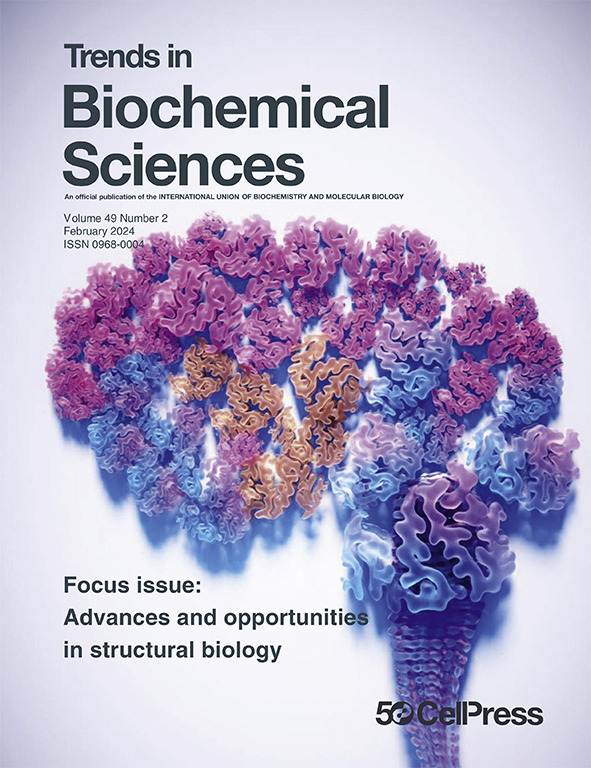对手性的敏感性与蛋白质紊乱连续相关。
IF 11.6
1区 生物学
Q1 BIOCHEMISTRY & MOLECULAR BIOLOGY
引用次数: 0
摘要
内在无序蛋白(IDPs)以动态构象集合体的形式存在,其行为挑战了蛋白质结构-功能范式的原则。在一项新的研究中,Newcombe、Due等人揭示了对手性敏感性的惊人连续性:虽然折叠的配合物受到很强的手性约束,但逐渐无序的配合物对手性的敏感性下降。本文章由计算机程序翻译,如有差异,请以英文原文为准。
Sensitivity to chirality correlates in a continuum with protein disorder.
Intrinsically disordered proteins (IDPs) exist as dynamic conformational ensembles the behavior of which challenges the tenets of the protein structure-function paradigm. In a new study, Newcombe, Due et al. reveal a striking continuum in sensitivity to chirality: while folded complexes are under strong chiral constraints, progressively disordered complexes show decreased sensitivity to chirality.
求助全文
通过发布文献求助,成功后即可免费获取论文全文。
去求助
来源期刊

Trends in Biochemical Sciences
生物-生化与分子生物学
CiteScore
22.90
自引率
0.70%
发文量
148
审稿时长
6-12 weeks
期刊介绍:
For over 40 years, Trends in Biochemical Sciences (TIBS) has been a leading publication keeping readers informed about recent advances in all areas of biochemistry and molecular biology. Through monthly, peer-reviewed issues, TIBS covers a wide range of topics, from traditional subjects like protein structure and function to emerging areas in signaling and metabolism. Articles are curated by the Editor and authored by top researchers in their fields, with a focus on moving beyond simple literature summaries to providing novel insights and perspectives. Each issue primarily features concise and timely Reviews and Opinions, supplemented by shorter articles including Spotlights, Forums, and Technology of the Month, as well as impactful pieces like Science & Society and Scientific Life articles.
 求助内容:
求助内容: 应助结果提醒方式:
应助结果提醒方式:


